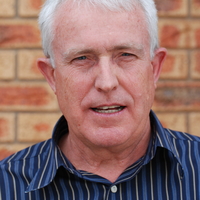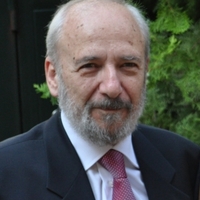Papers by Peter Roennfeldt

Spes Christiana, Jun 1, 2021
Postmodernism challenges the church. The complexity of late 20th and early 21st century American ... more Postmodernism challenges the church. The complexity of late 20th and early 21st century American evangelicalism was the environment for fresh Emerging Church conversations. Interest in Americanized Church Growth was waning, and church attendance was continuing to decline in spite of charismatic renewal. There was increasing frustration with the evangelistic ineffectiveness of the mega-church seeker models in reaching postmoderns, together with the growing realization that there were alternatives to inherited Constantinian models of church. It is a complex conversation. Some, who are faithful to biblical authority, doctrine and the eternal gospel of Jesus Christ, have sought to keep the focus on being both a missional and missionary movement. This article does not simply list what is right or wrong with Emerging Church, nor confine discussion to certain practices. It examines how Adventists have assessed this movement, and, in reflecting the author's academic, professional and personal journey of ministry, it represents an Adventist response.

Journal of Adventist Mission Studies, 2010
Contextualization is about "how the Gospel and culture relate to one another across geographic sp... more Contextualization is about "how the Gospel and culture relate to one another across geographic space and down through time" (Whiteman 1997:2). But as well as being about communicating the gospel in ways that make "sense to people within their local cultural context," Darrell Whiteman argues that "good contextualization offends." This is not due to cultural offense, but rather, when the gospel is shared and the church organized "along appropriate cultural patterns. .. people will more likely be confronted with the offense of the Gospel, exposing their own sinfulness and the tendency toward evil, oppressive structures and behavior patterns within their culture" (1997:3). Such contextualized expressions are prophetic, expanding the ways in which the gospel is understood and the kingdom of God experienced. While forms of organization that reflect both cultural patterns and the tri-unity of God cannot be neglected if the church is to be effective in sharing the gospel in post-Christendom societies, those must be the subject of another paper. In this article I will focus upon contextualized expressions of the gospel message in post-Christendom societies, with specific reference to Australian culture. Readers from other post-Christendom societies will identify a frame and process in this study, for their own environments. It is my contention that countercultural expressions of the gospel most constructively confront post-Christendom communities. After reviewing Stephen Bevans' models of contextual theology I will use Paul Hiebert's four steps of "critical contextualization" (Hiebert 1987:109-110) as my outline. Part 1 will review Bevans' models and explore the first of Hiebert's steps-an exegesis of Australia's cultural trends. Part 2 will explore steps (1) reflection upon the biblical message of the gospel to be contextualized, (2) an analysis of convergence and dissonance between the gospel and Australian culture, and (3) suggestions for fresh symbols and rituals to communicate the gospel in forms indigenous to Australian culture.

Spes Christiana, 2021
Postmodernism challenges the church. The complexity of late 20th and early 21st century American ... more Postmodernism challenges the church. The complexity of late 20th and early 21st century American evangelicalism was the environment for fresh Emerging Church conversations. Interest in Americanized Church Growth was waning, and church attendance was continuing to decline in spite of charismatic renewal. There was increasing frustration with the evangelistic ineffectiveness of the megachurch seeker models in reaching postmoderns, together with the growing realization that there were alternatives to inherited Constantinian models of church. It is a complex conversation. Some, who are faithful to biblical authority, doctrine and the eternal gospel of Jesus Christ, have sought to keep the focus on being both a missional and missionary movement. This article does not simply list what is right or wrong with Emerging Church, nor confine discussion to certain practices. It examines how Adventists have assessed this movement, and, in reflecting the author's academic, professional and personal journey of ministry, it represents an Adventist response.
In view of the continuing high attrition of next generations from the Adventist church, perhaps, ... more In view of the continuing high attrition of next generations from the Adventist church, perhaps, like with effective parenting, the best the church can do is to equip the next generation to “leave church” — releasing them to give birth to the next generation of Adventism. This involves trust — trusting the next generations, and trusting God with the future of his church
Journal of Adventist Mission Studies, 2010
The task of critical contextualization involves being “culturally-attuned” and allowing “the gosp... more The task of critical contextualization involves being “culturally-attuned” and allowing “the gospel to challenge and transform the culture” (Langmead 2002:1). Part 1 (see the 2010 Journal of Adventist Mission Studies 6, no. 2) of this article reviewed models of contextual theology, suggested an exegesis of Australia’s cultural trends and future directions, and reflected upon the gospel to be contextualized. Part 2 will now explore the next of Paul Hiebert’s four step process of “critical contextualization” (Hiebert 1987:109); Step 3, an analysis of convergence and dissonance between the gospel and Australian culture; and Step 4, suggestions for fresh symbols and rituals to communicate the gospel in forms indigenous to the Australian post-Christendom culture.
It is one of the greatest mysteries of Christian faith, the belief that Jesus did not stop being ... more It is one of the greatest mysteries of Christian faith, the belief that Jesus did not stop being God but became truly human: both human and God at the same time!
There's more to Revelation than just end-time events; linked to those events is something deeper ... more There's more to Revelation than just end-time events; linked to those events is something deeper - missiological insights!










Uploads
Papers by Peter Roennfeldt
1. The early Apostolic Church Fathers were mostly from the East.
2. The early ecumenical church Councils were all held in the East, in what is Türkiye today.
3. The earliest church buildings were built in the East.
The purpose of this draft paper is to raise a discussion about the development of the early church and the implications for church and mission today.